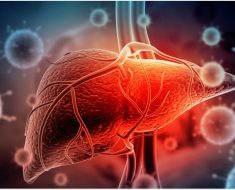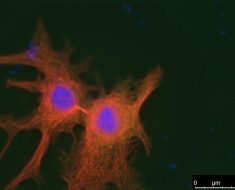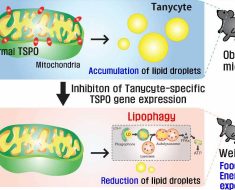In May, just before one of the hottest summers on record, the U.S. Centers for Disease Control and Prevention issued a warning about diseases lurking in recreational water facilities like swimming pools and water playgrounds. The culprit in nine out of ten cases in which an infectious cause was identified was the microscopic parasite Cryptosporidium.
Crypto, which commonly refers to both the parasite and the diarrheal disease that it causes, cryptosporidiosis, infects humans and animals. It is a serious problem in developing countries, where it is a leading cause of life-threatening diarrhea in children under two. Now cases reported in the U.S. are increasing.
Swallowing one mouthful of crypto-contaminated water can cause illness. While most people recover after a few weeks of significant gastrointestinal upset, young children, the elderly, and the immunosuppressed can face chronic infection, wasting, cognitive impairment, and even death.
No vaccine exists, and the sole FDA-approved drug for crypto is, paradoxically, ineffective in people with weakened immune systems.
A major roadblock to developing drugs is the fact that crypto oocysts—the infectious form of the parasite that thrives in the small intestine—are impossible to cultivate under laboratory conditions, explained Saul Tzipori, distinguished professor of microbiology and infectious diseases at Cummings School, who has made the study of crypto and other intestinal diseases his life’s work.
To produce oocysts for scientific investigation, crypto must therefore be grown in host animals. The process is expensive, time-consuming, and cumbersome.
“To evaluate and optimize prototype vaccines and test them in humans we need to use the same source, age, viability, quality, and quantity of oocysts. This is impossible with available methods, which necessarily involve variation,” said Tzipori, who is also the Agnes Varis Chair in Science and Society and chair of the Department of Infectious Disease and Global Health.
Now Tzipori and his team, in collaboration with researchers at Massachusetts General Hospital, have developed a way to rapidly freeze crypto oocysts, preserve their infectiousness indefinitely, and thaw them as needed for study. The researchers recently published their discovery, which was supported by the Bill & Melinda Gates Foundation, in Nature Communications.
For the past forty years, scientists have tried to keep crypto oocysts for later use by freezing them—a process called cryopreservation—using slow cooling, “but those methods didn’t yield infectious oocysts,” explained the paper’s co-first author, Justyna Jaskiewicz, a veterinarian who is pursuing a Ph.D. in biomedical sciences as a member of Tzipori’s lab. The group discovered that the oocysts’ impermeable walls kept out cryoprotective agents—chemicals that are typically used to prevent formation of harmful ice crystals by replacing intracellular water. As a result, sharp ice crystals formed, which punctured and damaged the oocysts’ infectious interior.
To help tackle this problem, Tzipori’s team tapped the expertise of Massachusetts General’s Center for Engineering in Medicine, whose co-founder, Mehmet Toner, is widely known for advances in low-temperature biology and tissue stabilization.
The solution turned out to be bleaching the oocysts to make their walls permeable before soaking them in protective chemical agents.
Oocysts in solution were then loaded into cylindrical glass microcapillaries about three inches long and 200 microns in diameter—the diameter of about four human hairs—and plunged into liquid nitrogen at -196 degrees Celsius (about -320 Fahrenheit). Almost immediately, the oocyst solution morphed into a glasslike solid free of ice crystals.
“Unlike standard cryopreservation, where cells are slowly cooled, our technique vitrified the oocysts almost instantaneously. Vitrification is an ice-free method that cools cells so rapidly that crystals don’t form,” said Rebecca Sandlin, an investigator at the Center for Engineering in Medicine and co-first author on the paper.
Oocysts thawed three months later were 50 to 80 percent viable and still infectious in mice. The researchers believe such cryopreservation will last indefinitely. They hope to increase the volume of oocysts frozen and test the methodology with other strains of the parasite.
The discovery is just the latest from Tzipori’s far-ranging research on a host of globally important infectious diseases, from E. coli to dengue fever.
Tzipori believes ultrafast cooling will benefit scientists worldwide in addition to advancing his own work on crypto drug discovery and vaccine development.
Source: Read Full Article





